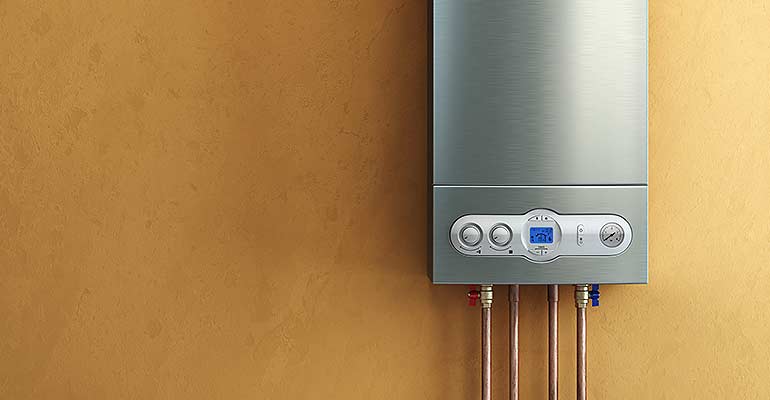The article author is making several great pointers relating to Tips For Maintaining Your Hot Water Heater overall in this content just below.

Warm water is important for everyday comfort, whether it's for a revitalizing shower or washing recipes. To ensure your warm water system runs efficiently and lasts much longer, normal maintenance is vital. This article gives useful ideas and insights on just how to maintain your home's hot water system to stay clear of interruptions and pricey repair work.
Intro
Preserving your home's warm water system may appear difficult, yet with a few straightforward steps, you can guarantee it operates efficiently for years to come. This guide covers every little thing from understanding your hot water system to do it yourself upkeep tips and understanding when to employ professional help.
Value of Maintaining Your Hot Water System
Routine upkeep not just extends the life expectancy of your warm water system yet also ensures it operates effectively. Disregarding maintenance can lead to reduced effectiveness, greater energy expenses, and also premature failure of the system.
Indicators Your Hot Water System Requirements Upkeep
Knowing when your hot water system requires focus can avoid major problems. Keep an eye out for signs such as inconsistent water temperature level, strange noises from the heating unit, or corroded water.
Understanding Your Warm Water System
Prior to diving into maintenance tasks, it's handy to understand the fundamental parts of your hot water system. Normally, this includes the water heater itself, pipelines, anode rods, and temperature level controls.
Month-to-month Maintenance Tasks
Normal monthly checks can assist capture minor problems prior to they escalate.
Flushing the Hot Water Heater
Flushing your water heater gets rid of sediment accumulation, boosting efficiency and extending its life.
Monitoring and Changing Anode Rods
Anode rods stop corrosion inside the tank. Checking and changing them when worn out is important.
Evaluating and Adjusting Temperature Settings
Readjusting the temperature settings ensures optimal performance and safety.
DIY Tips for Maintenance
You can carry out a number of maintenance tasks yourself to keep your hot water system in top condition.
Checking for Leaks
Routinely inspect pipes and connections for leaks, as these can lead to water damage and greater costs.
Examining Stress Alleviation Valves
Evaluating the stress safety valve ensures it works correctly and avoids excessive pressure build-up.
Shielding Pipes
Insulating warm water pipes reduces warmth loss and can conserve energy.
When to Call a Specialist
While DIY maintenance is useful, some issues require specialist experience.
Facility Problems Needing Professional Help
Examples include major leakages, electric problems, or if your water heater is continually underperforming.
Regular Expert Maintenance Conveniences
Expert maintenance can include thorough examinations, tune-ups, and making sure compliance with safety criteria.
Final thought
Regular upkeep of your home's warm water system is important for efficiency, long life, and expense savings. By complying with these pointers and understanding when to seek specialist assistance, you can ensure a trusted supply of warm water without unexpected disturbances.
How to Maintain an Instant Hot Water Heater
Before tinkering with your hot water heater, make sure that it’s not powered on. You also have to turn off the main circuit breaker and shut off the main gas line to prevent accidents. Also turn off the water valves connected to your unit to prevent water from flowing into and out of the appliance. 2. When you’re done, you have to detach the purge valves’ caps. These look like the letter “T” and are situated on either side of the water valves. Doing so will release any pressure that has accumulated inside the valves while at the same time avoid hot water from shooting out and burning your skin. 3. When the purge valves’ caps are removed, you have to connect your hosing lines to the valves. Your unit should have come with three hoses but if it didn’t, you can purchase these things from any hardware or home repair shops. You can also get them from retail stores that sell water heating systems. Read the user’s manual and follow it to complete this task properly. When the hosing lines are connected, open the purge port’s valves. 4. You should never use harsh chemical cleaners or solutions when cleaning your unit. Make use of white vinegar instead. It should be undiluted and you’ll probably use about 2 gallons. 5. Now flush your water heater. This task should probably take about 40 minutes. We can’t give you specific directions for this because the procedure is carried out depending on the type, model and brand of your heater. With that being said, refer to the user’s manual. 6. When you’re done draining the unit, you have to turn off the purge port valves again. Remove the hosing lines that you earlier installed on each of the water valves. Put the valve caps (purge port) back in their respective places and be very careful so as not to damage the rubber discs that are found inside these caps. 7. Now that everything’s back in place, check your user’s manual again to find out how to reactivate your water heating system. 8. Once it is working, turn one of your hot water faucets on just to let air pass through the heater’s water supply pipes. Leave the tap on until water flows smoothly out of it. https://www.orrplumbing.com/blog/2014/september/how-to-maintain-an-instant-hot-water-heater/

We had been shown that editorial on What Kind of Maintenance Do Water Heaters Need? from a buddy on our other website. Don't hesitate to take a moment to promote this blog entry if you enjoyed reading it. Thank you for your time. Return soon.
Click